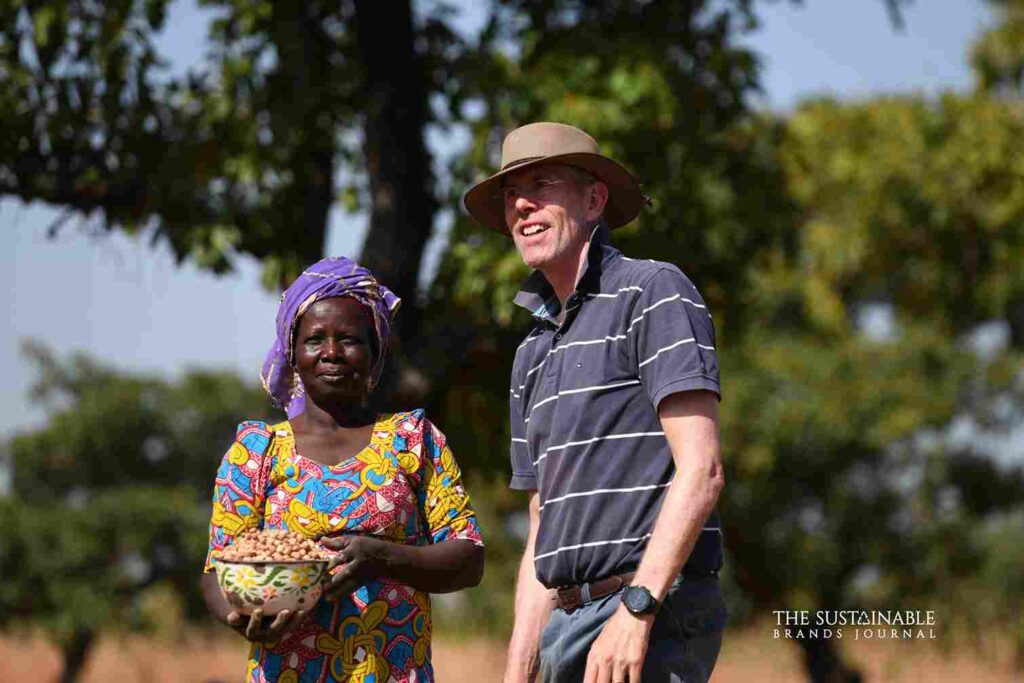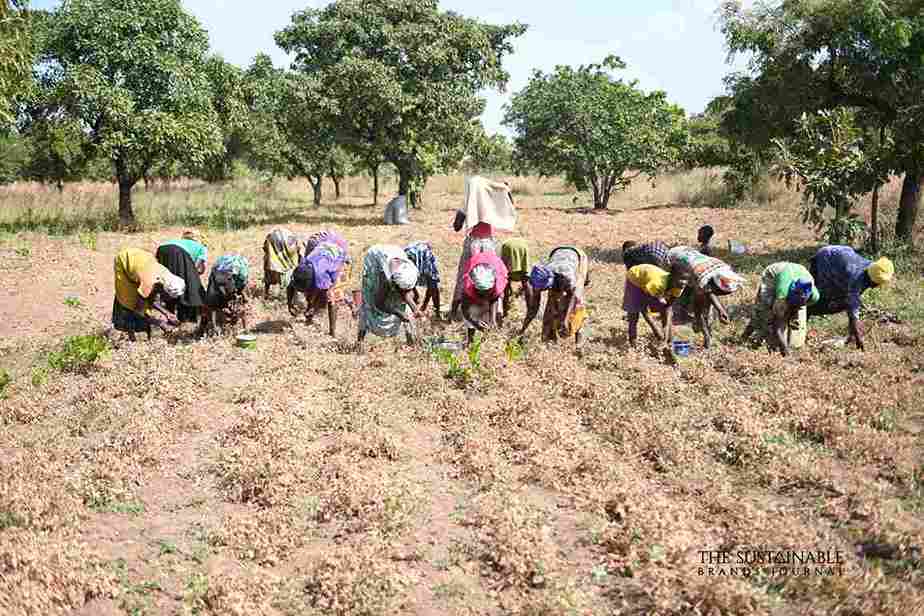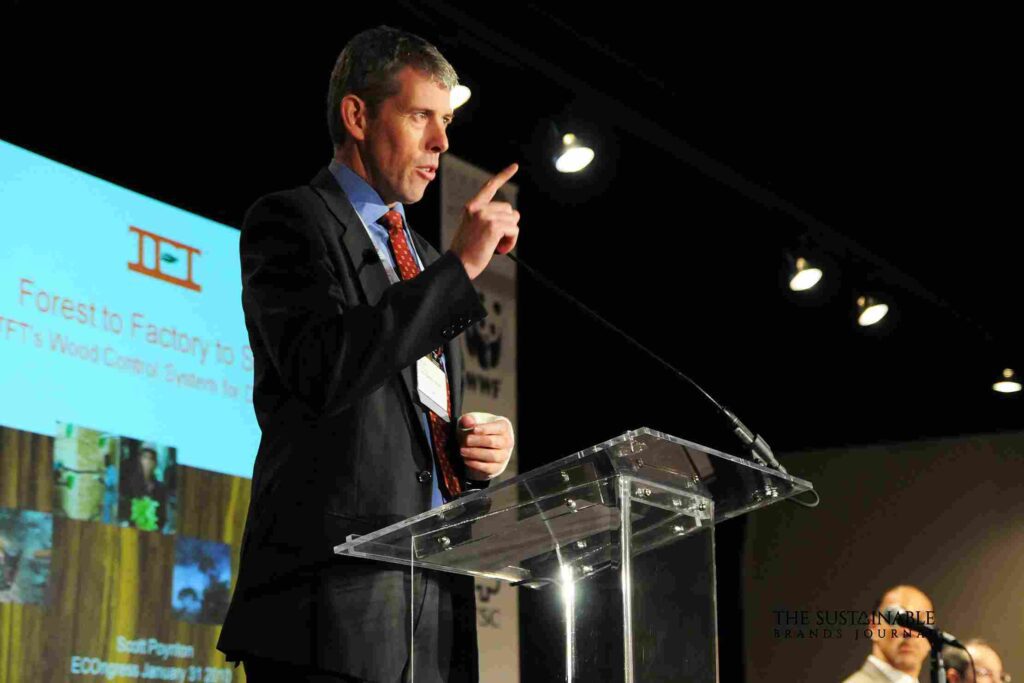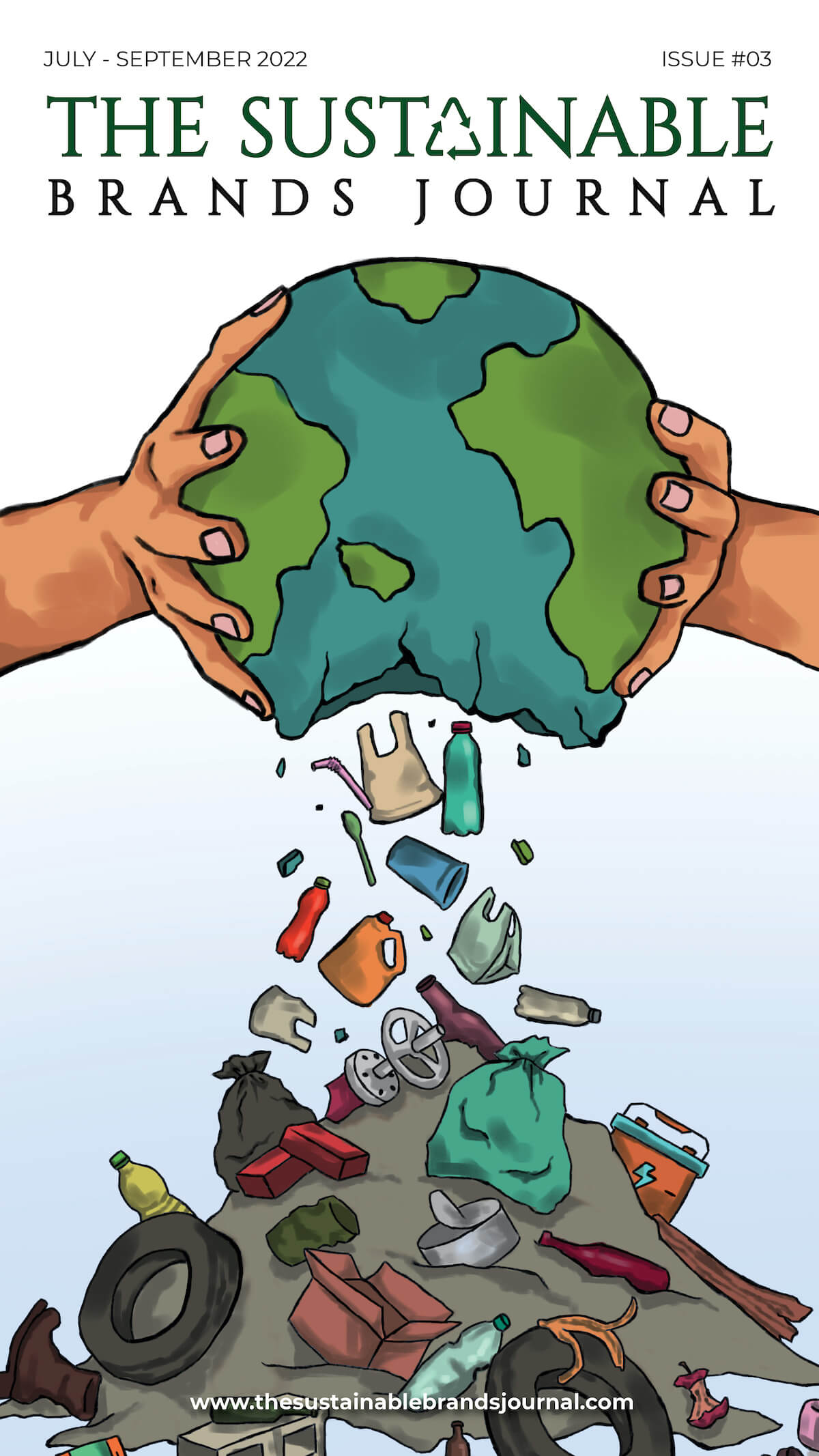
The ‘Unusual Methods’ of This Sustainability Changemaker Will Help You Place Climate Change at The Heart of Every Business Decision
Written by Manvi Pant
At age 15, Forester turned Changemaker Scott Poynton heard a radio interview with the Man of the Trees, Richard St. Barbe Baker. Enthralled by Baker’s use of poetry and science to tell stories, Scott decided to dedicate his life to the environment. He graduated from the Australian National University School of Forestry in 1987 and gained practical forestry experience working in Tasmania for two years before studying for a Master of Forestry at Oxford. In 1999, he founded The Forest Trust (TFT), now Earthworm Foundation, and relentlessly worked towards creating and implementing sustainable environmental policies for some of the world’s leading organizations. In 2015, he stepped aside as TFT’s CEO to start afresh. He is currently the Founder and CEO of the Pond Foundation and a different way Limited.
Scott doesn’t believe in awards, but his transformational efforts in building a highly resilient, low-carbon future and unique approach to helping organizations and individuals make climate-friendly decisions have earned him the title of ‘peacemaker.’ Over the years, Scott has worked from the bush to the boardroom, going into the field to understand what’s happening and bringing those insights back to leaders to help them to make wise decisions around environmental and social issues.
In this tell-all interview with The Sustainable Brands Journal, Scott Poynton shares actionable methods that individuals and organizations can adopt to fight the looming climate crisis. Read on!
1. What are you working on at the moment?
I’m as busy as ever! Ha, Ha! At the moment, I’m in northern Ghana, where I’m leading the development of a fascinating regenerative agriculture project with smallholder farmers for an amazing food company called WhatIF Foods. I’m doing this as part of my work with Pond Foundation, a non-profit I started back in January 2021, to help change how the world acts on climate change and bring life back to soils and communities through regenerative practices. Pond Foundation’s My Carbon Zero program supports companies to take robust and credible climate action, and I’m helping our members worldwide to do that. Through my company, called “a different way,” I’m launching a new online community to support social entrepreneurs, sustainability professionals, and changemakers to succeed and bring change at a larger scale!

2. When you say, “Pond Foundation’s My Carbon Zero program supports companies to take robust and credible climate action,” – Is there any specific vertical of companies you are supporting, or is it relevant to everyone?
It is open to all. Any company or individual can go Lifetime Carbon Zero, removing from the atmosphere all the carbon they’ve emitted since their birth. I’m doing it, the Pond Foundation is doing it, and our members are doing it. I hope to inspire as many organizations and individuals as possible to go lifetime carbon zero because we need to remove carbon from our atmosphere. Reducing emissions isn’t enough.
3. ‘a different way’ – That is a unique name and goes with your reputation of using ‘unusual methods’ to bring change around environment and sustainability. Can you elaborate more on the vision of this company and the kind of support you are providing through it?
‘a different way’ is about navigating with resonance and doing what feels correct. People often come to me when they are lost or searching for something. They generally do not know what it is, but they are drawn to this notion of finding ‘a different way’ to doing things, and they get in touch. My job is to help them find their path amidst the fog and uncertainty of life. Through ‘a different way,’ I support people to find a deep connection to themselves. In my experience, people achieve great things for themselves, others, and the planet through that. This unique way of helping people find inner calm and supporting them to build their well-being through self-discovery has been described as an unusual method, but it’s the one that has brought about so many grand transformations.
4. How did your journey start? Would you like to talk about your source of inspiration/motivation?
My journey started long ago. On a Sunday afternoon, the Universe conspired for me to listen to an ancient man – Richard St Barbe Baker – on the radio. St Barbe Baker, then 89, had spent his long life traveling the world, inspiring people to protect forests and plant trees. It was May 27th, 1979, three days after my 15th birthday. To that point, I had planned on being a vet because I love animals, but after listening to St Barbe, I knew that my life had transformed fundamentally. I thought this was the start of my journey, but then I pondered over St Barbe’s journey. He was inspired by his father, who owned a tree nursery. But what or who had inspired St Barbe’s father? And who before that? I thus feel this is not my journey but a continuation of many journeys before me that were set forth to protect nature. I think I’m just a tiny part of a larger story that started long before memory, and I hope to pass the baton to others.
5. How is your work as a sustainability changemaker different from what you did at The Forest Trust (TFT)?
“My work at TFT
protected millions of hectares of forests and secured the human
rights of millions of people.”
At TFT, the focus was primarily on responsible sourcing and supply chains. It was all about helping companies avoid environmental and social issues and be forces for good. With the Pond Foundation, I’ve gone up a level, and I am now helping companies and individuals take stronger climate action. I sense that we can have the most responsible supply chains in the world, but if we fail to control climate change, everything else we do will not count. As I did with TFT, I’m still building regenerative supply chains, but now it’s with a much bigger goal in mind.
My work at TFT protected millions of hectares of forests and secured the human rights of millions of people. That all goes out of the window if we do not deal with climate change and collectively act more responsibly. Everything I am doing right now revolves around that goal.

6. Top three projects undertaken that you would like to talk about – How do you think these projects have contributed to a larger good (3 key takeaways)?
Golly, not easy! Let’s try. The first would be pioneering responsible sourcing. Before I established TFT, companies would blame their suppliers for their supply chains’ environmental destruction and human rights abuses. I was one of the leading voices to squash this nonsense. I pushed them to own the responsibility and invest in fixing their mess. I was the first to inspire some of the largest companies in the world to invest billions in improved environmental and social performance, which led to some real sectoral changes. The impact of my work there is impossible to quantify because I led major companies to be first movers. Once they did, whole industries followed.
“Live every moment according to your values and inspire others to do the same. When they do, everything can change.”
The other would be – Ending gun violence on the island of Java in Indonesia in 2009. Since then, no one has been killed in Indonesia’s teak forests. Then, inspiring Nestlé to announce the world’s first ‘No Deforestation’ commitment. This had a cascading effect, and the world witnessed several other companies coming forward similarly. I also built the first and only Pygmy language community radio station in the Congo Basin. It is something I am incredibly proud of.
7. As a sustainability changemaker – what would be your recommended 5 essential sustainability elements that any business should incorporate?
Why do we need 5 when we can do with a powerful one, i.e., – Examine your values, define them, and live up to them in every moment of your life? Easier said than done, but it is essential to identify the good, bad, and ugly to contribute to the larger good. Once you do that, set about improving and transforming the bad and ugly and improving on the good. Then, get someone genuinely independent to verify how you are going. And lastly, be open. Look, listen and learn. Be humble, compassionate, and respectful.

8. What key challenges (according to you) do any businesses face when it moves towards sustainability?
The hardest part is always getting started. Because there is great fear of the unknown, I call it ‘crossing the Rubicon.’ Should you, shouldn’t you? What will be the consequences? Either they get pushed across by new legislation, or in the case of larger companies, by NGO campaigns. All of this ties a leader’s hands, and malpractices remain. And those sitting at the top get an opportunity to use this fear to justify their inaction. It would be great if they crossed the threshold, if they pushed boundaries. I am hopeful that impending catastrophe, in the form of climate change, will nudge them to do so. Staying true to the journey once you have crossed the threshold is a challenge, but less so if you have taken the initial step based on your fundamental values. What is unique about all the change journey’s I have inspired is that I help people to cross that threshold based on their values which means that when inevitable difficulties and challenges emerge, their commitment and drive to keep marching forward remains. They don’t fall back.
9. Are there any parameters that distinguish between greenwash and ethically sustainable businesses?
Oh yes, and you can usually see it through marketing budgets. When a company’s marketing budget is ten times the budget for sustainability, you can be confident there is greenwash in the mix. If a company keeps winning awards, you can be sure they’re putting in a significant effort at applying for them and telling grand stories. The most committed companies are humble and do it because it is right, not because it helps their marketing. It does help their marketing, but greenwashing is inevitable if that is their focus.
10. Do companies foraying into sustainability have to choose between people and environment, or can they also have policies that are both people and environment inclusive?
Absolutely, and they must. It’s not difficult to incorporate both in a credible sustainability approach. It’s easy and uplifting for everyone involved. It’s crucial to have joined-up thinking and, even more critical, to ensure your actions are collaborative and impactful.

Manvi Pant is a writer with The Sustainable Brands Journal. She has worked extensively at the intersection of corporate research, academics, and media in a decade-long career. Passionate about narrative and informative storytelling, Manvi uses both as mediums to make an impact. She proudly calls herself a conversation starter, hates keeping a business card, is a fan of Marie Condo, and admires a classic literary piece in a world filled with fluff.





